Nowodvorski LED Lamps
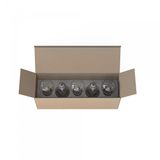
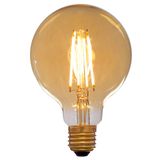

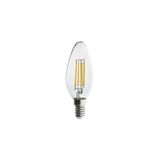


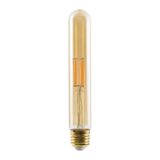

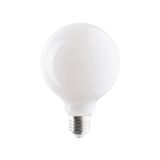
Smart LED Features in the Nowodworski Portfolio
Nowodworski’s “Smart LED” series includes models like the SMART LED 8358: 8 W integrated LED, adjustable colour temperature from 3 000 K to 6 000 K, luminous flux ~400 lm, beam angle 120°, rated lifetime 25 000 h.
From a systems-integration perspective, these are more than lamps—they are nodes in a building’s lighting network. Key specification areas: dimming protocol, control interface (app/Bluetooth/WiFi), colour tuning, driver compatibility, and firmware reliability.
For large installations (hotels, offices, retail), the value lies in fewer lamp types, consistent tone across zones, and integration into lighting management systems (LMS) for energy tracking and scene control.
Technical Metrics & Specification Checklist for Smart LED Lamps
Wattage & Luminous Output
- Example: 8 W LED delivering ~400 lm at 3 000–6 000 K.
- Efficiency: ~50 lm/W at lower flux levels; high-end may reach 75–90 lm/W depending on LED binning and thermal conditions.
Colour Temperature and Control
- Variable CCT: 3 000 K (warm) up to 6 000 K (cool daylight) on SMART 8358.
- CRI ≥ 80 standard, ensuring decent colour rendering for task and ambient lighting.
- In B2B roll-outs, specifying CCT tolerance (± 3 SDCM) is critical to avoid visible mismatches across luminaires.
Bm & Distribution
- Example beam angle: 120° for table lamp variant
- For different use-cases: narrower beams (e.g., 60°) may be required for accent tasks; wide beams for general ambient.
- Ensure optical design supports uniformity metrics (Uo, Uavg) especially in open-plan spaces.
Driver, Control & Network Integration
- Built-in driver in SMART series; rated for ~230 V AC with app control.
- Dimmer compatibility (0-10 V, DALI, trailing/leading edge) must be specified when integrating into existing controls.
- Smart lamps may include BLE or WiFi; confirm hub requirement or local-control mode (important for uplink reliability).
Neglecting driver/control compatibility is a common failure mode leading to flicker, limited dimming or control network issues.
Thermal & Lifetime Considerations
- Lifetime figure: 25 000 h for SMART 8358
- Capsule/integrated designs may be thermally constrained; verify ambient (Ta) rating and driver derating in enclosed fittings.
- For project procurement: compare total cost over life (initial cost + energy + maintenance) rather than purchase cost only.
Application Scenarios & Procurement Benefits
Scenario: Hotel Room Lighting Upgrade
Using the SMART LED series across all bedside lamps, desk lamps and reading lights simplifies spares, maintains consistent CCT across fixtures, and enables remote lighting scene control (e.g., “night mode 3000 K, full-on 4000 K”).
Quantitative benefit: If you replace 60 halogen 30 W lamps with 8 W LED, weekly 5 hours use → yearly saving ~60×(30-8)W×5h×52 ≈ 5950 kWh. Plus fewer lamp changes (halogen ~2 000 h vs LED 25 000 h) and reduced service cost.
Scenario: Office Partition Lighting with Smart Scenes
When desk lamps and ambient lamps are both from Nowodworski smart line, your lighting control system integrates them via a uniform driver/interface, simplifying installation and commissioning. Standardising the lamp family means one driver type, one catalogue code, one spare stock line — logistic efficiency for B2B.
Common Selection Mistakes and How to Avoid Them
- Mismatch in CCT or CRI: Mixing 3000 K and 4000 K in same zone leads to visual inconsistency. Always specify uniform CCT across fixture types.
- Using non-compatible dimmers: Smart lamps might require digital drivers; retrofitting old trailing-edge dimmers often causes flicker. Demand driver specs.
- Overlooked ambient environment: Lamp rated at Ta 25 °C but installed in ceiling void at 45 °C may fail early. Confirm thermal rating.
- Ignoring control-network bandwidth: Smart lamps may rely on BLE mesh or WiFi; high counts (>100) require infrastructure planning.
- Neglecting maintenance strategy: Ensure the series has long production life and spare availability — Nowodworski emphasises production continuity.
Specification Checklist for Your Procurement Pack
- Lamp model & SKU: e.g., SMART LED 8358.
- Power & flux: 8 W, ~400 lm.
- CCT range & CRI: 3 000-6 000 K, CRI ≥ 80.
- Control protocol: App/BLE, compatible with existing system.
- Beam angle / optical spec: 120° (or other as specified).
- Lifetime: L70 > 25 000 h.
- Driver & dimming: integrated driver, rated 230 V AC, dimming range e.g., 0-100 %.
- Environment rating: IP, IK as needed (indoor typically IP20).
- Maintenance & spare parts: verify series still in production 3-5 years, spares available.
- Total cost of ownership: include energy, replacements, control integration.
What Large-Scale Buyers Look for
Facility managers and lighting procurement teams focus on:
- Total lifecycle cost: Not just lamp cost, but combined energy (kWh), replacement labour hours, control commissioning.
- Uniformity & brand consistency: One lamp family across hotel rooms, offices, corridors reduces training/spares burden.
- Control integration: Smart lamps must work with BMS, DALI or building app—confirm interface upfront.
- Stock & supply reliability: Ensure local distributor (like Bank of Lamps) keeps reasonable volumes and spares
- Circular economy & future-proofing: Series should support firmware updates, compatibility with evolving control systems.
Procurement Offer Terms with Bank of Lamps (Streamlined Version)
- Volume-based pricing aligned with project scale.
- Dedicated account manager for spec, control-integration and delivery planning.
- Live warehouse stock visibility before order.
- Quick quote turnaround (~1 hour).
- Ordering via EAN/MPN lists for efficiency in large orders
- Full spec sheets and control-integration documentation available for download.
Transparent lead time and consolidated delivery options.